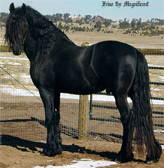The sun is out, and horses everywhere are ready to be ridden. With the better weather comes more opportunities to ride your horse outdoors. The heat and humidity of the warm months are just as dangerous to you and your horse as the cold can be in the winter. Since we have covered the gear to have during the winter, we only see it fit that we elaborate on the best summer gear for horseback riding.
For The Rider
Heat regulation with adequate protection from falls, rubbing against your horse, and protection from the sun are priorities for you while horseback riding. It is always important to wear light-colored clothing when in the sun. These colors reflect the sun, making you cooler, while dark colors absorb sunlight, heating you up. Light clothing also allows you to spot ticks and insects crawling on you before they can reach the skin.
important to wear light-colored clothing when in the sun. These colors reflect the sun, making you cooler, while dark colors absorb sunlight, heating you up. Light clothing also allows you to spot ticks and insects crawling on you before they can reach the skin.
One of these essential items of clothing is a sun blocking shirt. Many equine riding shirts come in options for UV blocking, which will cover you from heat radiation in all of those areas without sunscreen. Blocking the sun’s rays from your face may seem as simple as sunglasses, but there are better alternatives that will keep you from slathering your face with aloe the next morning. The Equivisor is a wide brim extension that fits over helmets, perfect for sunny rides.
The best fabrics allow your body to cool itself. Lightweight wicking fabrics do this exceptionally well, being breathable and moisture absorbing. On the bottom, many riders use tights to protect your legs from friction while still being cool. Look for brands with ‘Cool’ in the product name, such as CoolMax or CoolBlast, as these products generally are wicking. Most aspects of a rider’s wardrobe have options for ventilation. Even socks, gloves, and helmets come in a variety of ventilated and lightweight options.
For Your Horse
For your horse, it is important to know how to find the heat index on a day you plan on riding. The heat index is the combined temperature and humidity on the given day. Horses work best in cooler conditions, around 70 degrees Farenheight, as well as mid humidities around 30-40%. These combine to a heat index of around 100, which is a great and pleasant condition for both the horse and rider. Temperatures and heat indexes around 160 and above can be dangerous riding conditions, especially those bordering 200.
Many riding pads are equipped with cooling technology, just like the shirts and tights for riders. One of these options is the CoolFit riding pad, which senses the sweat of the horse and reacts by reducing its temperature and quickly evaporating moisture. It comes in a variety of colors, but we recommend the lighter ones to keep it colder.
Another summer necessity is keeping bugs off, as these pests carry harmful diseases and can cause infections. Try RK Topical spray for an all-natural solution that lasts several days. Click the link to find out why RK spray wins every time: It is 300-600 percent stronger than any other product in your tack box. Another way to bug proof is to shop for fly boots, which cover the areas of the legs most likely to pick up ticks, flies, and other pests.

After your horse finishes its ride, consider giving them a salt block to replenish the vitamins and minerals they lost from sweating. A salt block will replenish the iron, potassium, and magnesium. Salt blocks also build up your horse’s thirst, causing them to get drinks more frequently thus avoiding dehydration. You still can lead a horse to water without being able to get him to drink, but with a salt block, it’ll be that much easier.
As with any riding, consider your horse’s trim and fitness level before taking them out for too long. Consider buying clippers for your horse’s coat, as well as a wicking blanket for your horse during night-time. To determine your horse’s ability to ride in hotter temperatures, we offer free veterinary consults. Click here for more information, and make sure that your horse is ready for the summer!





; ?>/wp-content/themes/twentyten/img/NMImacLogo_150.jpg)






